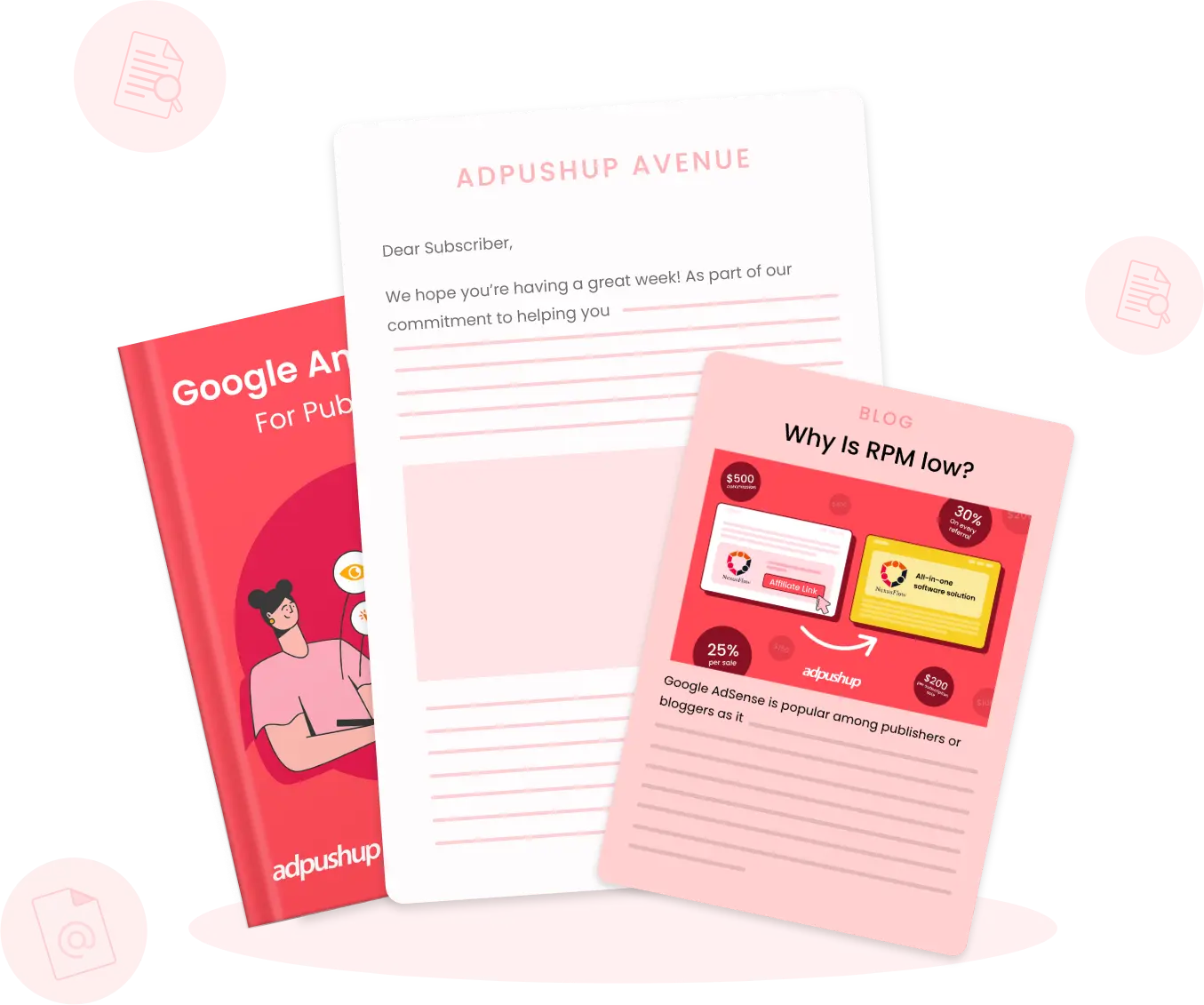Dive into the world of advertising deception as we introduce you to the fallacy in advertising. Gain insights into how these tactics work and learn to protect yourself from their persuasive allure.
Have you ever seen an advertisement that made you feel like you had to buy the product?
It could be a phone that promises to offer a better camera or a weight loss supplement guaranteed to give you a beach body in weeks.
Whatever it was, you probably convinced yourself you needed the product, even if you didn’t want it.
Many advertisers use ads with logical fallacies to manipulate our emotions and get us to buy their products. Sometimes, these can be misleading advertising as well, thus, it’s important to get in the depth of the ad to save yourself.
Ads with logical fallacies are a type of flawed thinking that can be utilized to make an argument sound more plausible than it actually is.
There are many different types of logical fallacies, but some of the most common ones used in advertising include appeal to authority, bandwagon appeal, and fear appeal.
Today, we will discuss the top 8 fallacies used in advertising and provide examples of how they are used.
First, let’s find out what a fallacy in advertising is.
What is a Fallacy in Advertising?
Fallacies in advertising are deceptive or misleading arguments that rely on faulty reasoning rather than sound evidence or logic. These are commonly logical fallacies that try to grab customer’s attention and persuade them to buy products or services with faulty messaging.
Generally, a fallacy is an error in reasoning that can lead to unreliable or invalid conclusions.
Fallacies can take various forms and exploit cognitive biases, emotional triggers, or incomplete information to persuade individuals without providing substantial evidence or logical support.
Application in Advertising
In advertising, fallacies create an illusion of credibility, desirability, or urgency for products or services.
Marketers frequently resort to ads with logical fallacies in an effort to sway customers and get them to buy their products.
Exploiting common human vulnerabilities, such as the desire for acceptance, fear of missing out, or the need for social status, fallacies in advertising manipulate consumers’ perceptions and choices.
Importance of Recognizing a Fallacy in Advertising
Recognizing fallacies in advertising is essential for consumers to navigate the complex marketing world and make well-informed decisions.
In today’s digitally connected and advertisement-saturated world, consumers are constantly exposed to persuasive messages that aim to shape their preferences and behaviours.
Understanding fallacious reasoning can help individuals become more critical and discerning consumers, equipped to distinguish between genuine product benefits and manipulative marketing tactics.
As media-savvy individuals, recognizing fallacies empowers us to approach advertisements with a healthy dose of skepticism. Instead of passively accepting claims made by advertisers, we can ask critical questions and demand evidence to support these claims.
This active engagement allows us to guard against potential deception and make choices based on facts and logical reasoning rather than emotional impulses.
Why Should Publishers Care About Fallacies in Advertising?
Publishers should be aware of advertising fallacies for several reasons because the credibility of the content they host is at stake.
As a rule, audiences view publishers as trusted platforms for disseminating information to a wide audience.
Trust and Credibility
If advertisements on their platforms employ fallacious tactics, it not only erodes the trust users place in the ads but also reflects poorly on the publisher’s commitment to providing reliable and accurate content.
In an era where misinformation is widespread, publishers must prioritize the integrity of the information ecosystem they contribute to by scrutinizing and avoiding fallacious advertising.
Legal Implications
Secondly, advertising fallacies or falsified information in the advertisements can have legal implications for publishers. False advertising claims can lead to legal challenges, fines, and damage to a publisher’s reputation. Advertisements that employ deceptive tactics, such as false statistics or misleading comparisons, can attract regulatory scrutiny. Publishers must be vigilant in vetting the content they host to ensure it adheres to advertising standards and regulations. By actively addressing fallacies, publishers can safeguard themselves from legal repercussions and demonstrate a commitment to ethical advertising practices.
Audience Engagement
Finally, audience engagement and retention are critical for publishers, and fallacious advertising can undermine these key metrics. Users are becoming increasingly discerning, and they value authenticity and transparency. If users perceive a publisher’s platform as a space that tolerates deceptive advertising practices, they are likely to disengage and seek information elsewhere. Publishers who prioritize accuracy and truthfulness in advertising not only retain their audience’s trust but also position themselves as reliable sources, fostering long-term relationships with their users and advertisers alike.
In essence, caring about advertising fallacies is not just a moral imperative for publishers; it’s a strategic necessity for sustaining a healthy and thriving digital publishing ecosystem.
Why Do Advertisers Use Fallacies?
Advertisers may resort to using fallacies for a variety of strategic reasons, often driven by the desire to capture attention, persuade consumers, or gain a competitive edge.
Crowded Marketplace
One primary motive is the quest for attention in a crowded marketplace. With the constant bombardment of advertisements across various channels, advertisers may feel compelled to employ fallacious techniques to stand out from the noise. Fallacies, such as emotional appeals or sensationalism, can create a memorable and attention-grabbing campaign that resonates with consumers, even if the underlying argument lacks logical merit. In the short term, this attention-grabbing strategy may lead to increased visibility and engagement.
Shortcut To Persuasion
Crafting a compelling and logically sound argument requires time, resources, and a deep understanding of the target audience. In contrast, fallacious appeals can tap into cognitive biases or emotional triggers that resonate with consumers more quickly and easily. This can be especially tempting in situations where advertisers face tight deadlines or resource constraints. While fallacies may lead to immediate gains in persuasiveness, the long-term impact on brand trust and credibility can be detrimental.
Below is a simplified table highlighting potential short-term gains and long-term risks associated with the use of fallacies in advertising:
| Outcome | Short-Term Gains | Long-Term Risks |
| Attention & Engagement | Increased visibility and recall due to attention-grabbing fallacious tactics. | Erosion of trust and credibility over time as users become wary of deceptive advertising practices. |
| Persuasion | Quick and easy persuasion leveraging emotional appeals or cognitive biases. | Potential legal consequences, damage to brand image, and loss of customer loyalty. |
Consequences of Falling Prey to Fallacious Advertising Tactics
Falling for fallacious advertising tactics can have significant consequences for consumers:
Wasted Resources
Consumers may spend their hard-earned money on products or services that fail to deliver the promised benefits. Fallacious advertising can create unrealistic expectations, leading to disappointment and dissatisfaction.
Misinformed Decisions
If consumers are not vigilant, they may base their decisions on false or exaggerated claims, resulting in choices that do not align with their needs or preferences.
Health and Safety Risks
In some cases, fallacious health claims in advertising could lead individuals to adopt questionable practices or purchase products that pose health risks.
Environmental Impact
Misleading environmental claims may encourage consumers to choose products they believe are eco-friendly but, in reality, contribute to environmental harm.
Reinforcing Unhealthy Norms
Fallacious advertisements can perpetuate harmful societal norms and stereotypes, influencing behaviours detrimental to individuals or society.
Worsening Debt and Financial Stress
Consumers who fall prey to misleading financial promises or unrealistic pricing may be burdened with debt and financial stress.
Examples of Top 10 Fallacies in Advertising
1. Ad Hominem Fallacy
The ad hominem fallacy can take place in advertising when the focus shifts from the merits of a product or service to attacking the character or personal traits of a competitor or those associated with it. This tactic aims to undermine the competition in the eyes of the consumer, often without providing any substantive information about the advertised product itself. Here are a couple of examples:
Personal Attacks on Competing CEOs
To gain a competitive edge, a smartphone company might launch an ad campaign that focuses not on the features and benefits of its own product but on personal attacks against the CEO of a rival company. The ad may use language like, “Don’t trust a CEO who can’t innovate,” implying that the competitor’s leader is lacking in innovation without providing evidence related to the quality of the product.
Celebrity Endorsements and Character Assassination
For instance, an energy drink advertisement might feature a well-known athlete claiming that only their drink keeps them at peak performance. Implicitly, the ad may suggest that competitors’ products are inferior, and by choosing them, consumers are making a less intelligent or suboptimal choice. This tactic diverts attention from the product’s actual qualities and relies on associating the competition with negative character traits.
Recognizing these ad hominem fallacies in advertising is essential for consumers to make informed choices based on the actual merits of products and services rather than succumbing to manipulative tactics that focus on personalities or unrelated attributes.
2. Scare Tactics
Scare tactics in advertising involve using fear or anxiety-inducing messages to persuade consumers to take a desired action, often purchasing a product or service.
For instance, a home security system commercial might employ scare tactics by vividly depicting a break-in scenario, emphasizing the potential danger to one’s family and possessions without their product.
Similarly, certain health-related advertisements might use graphic images or dramatizations to highlight worst-case scenarios associated with not using a particular medication or engaging in specific health behaviours.
While scare tactics can effectively capture attention and prompt immediate action, critics argue that they may lead to emotional manipulation, the distortion of facts, and the exploitation of consumers’ fears to drive sales.
3. Traditional Wisdom
Leveraging traditional wisdom in advertising involves tapping into established beliefs, cultural norms, or age-old sayings to resonate with consumers on a deeper, more relatable level. Advertisers often use familiar cultural narratives or proverbial wisdom to build trust and establish a connection with their audience. This strategy relies on the assumption that aligning a product or service with time-tested wisdom imparts a sense of reliability and authenticity, making it more appealing to consumers who value tradition and cultural continuity.
For example, a skincare brand might incorporate the traditional wisdom of natural remedies and timeless beauty secrets in their advertising campaign. The messaging could emphasize the use of age-old ingredients known for their skincare benefits, echoing the wisdom passed down through generations.
By aligning the product with the notion that these ingredients have stood the test of time, the advertisement aims to convey a sense of trustworthiness and efficacy. This approach not only taps into the consumers’ appreciation for traditional wisdom but also positions the product as a bridge between the past and the present, offering a timeless solution to contemporary needs.
However, a pitfall is the assumption that all consumers share the same traditional values. Society is diverse, and what resonates positively with one group might not have the same effect on another. Using traditional wisdom in a way that oversimplifies or generalizes cultural nuances can lead to misinterpretation and alienation of certain demographics, resulting in a loss of credibility and trust
4. Halo Effect
The Halo Effect in advertising refers to the cognitive bias where positive perceptions of a product or brand in one dimension influence overall judgments about its other attributes. While this can be a powerful tool, it has potential downsides.
One adverse effect is the risk of overlooking or downplaying genuine flaws in a product or service due to an excessively positive initial impression. For instance, if a tech company creates an emotionally compelling and aesthetically pleasing advertisement for a new smartphone, consumers may develop an overall positive perception of the brand.
However, this Halo Effect might lead them to overlook or minimize concerns about the device’s actual functionality or potential drawbacks, such as battery life or software issues. As a result, consumers might make purchasing decisions based on an idealized perception created by the initial positive impression, only to realize later that the product does not meet their practical needs. This exemplifies how the Halo Effect can contribute to a gap between perception and reality in consumer decision-making.
5. Appeal to Authority
The Appeal to Authority fallacy in advertising is common in advertising, where advertisers attempt to persuade consumers by appealing to the authority or credibility of a person or organization rather than presenting solid evidence or logical reasoning.
In this fallacious tactic, the authority figure is often unrelated to the product or service being promoted, and their endorsement is used to create a perception of trustworthiness and legitimacy.
Let’s say you come across an advertisement for a weight loss supplement.
The ad features a well-known celebrity, who is not a healthcare professional or a nutrition expert, claiming that the supplement helped them lose significant weight.
The ad further implies that since the celebrity endorses the product, it must be effective and safe.
In this scenario, the fallacy lies in relying on the celebrity’s fame and popularity as an authority figure to convince consumers of the product’s efficacy. However, the celebrity’s expertise in weight loss or the supplement’s actual effectiveness needs to be demonstrated in the ad.
The celebrity’s endorsement is intended to bypass critical thinking and create an emotional appeal, leading consumers to believe that the product is reliable without further scrutiny.
6. Appeal to Emotions
Appeal to emotions in advertising involves leveraging emotional triggers to influence consumer attitudes and behaviors. While emotional appeals can be highly effective, there are potential side effects and risks associated with this strategy. One notable side effect is the manipulation of consumer emotions to the detriment of informed decision-making. Such a fallacy in advertising example could be a car commercial that zmight evoke a powerful sense of nostalgia, family, or adventure, creating an emotional connection with the audience. However, this emotional appeal might distract consumers from critically evaluating the car’s actual features, performance, or value for money.
Another side effect of emotional appeals is the potential for the message to be perceived as insincere or manipulative. If consumers sense that emotions are being exploited purely for commercial gain without a genuine connection to the product or service, it can erode trust. An advertisement that plays on people’s fears, insecurities, or desires excessively may be viewed as emotionally manipulative rather than authentically resonant, leading to a backlash from consumers who feel deceived.
For instance, a weight loss product ad might use emotional imagery of individuals transforming their bodies, preying on the emotions associated with societal beauty standards. If the product’s effectiveness is exaggerated or if the emotional narrative is disconnected from reality, consumers may feel betrayed and question the authenticity of the brand’s messaging. In conclusion, while emotional appeals can be powerful, advertisers must tread carefully to avoid manipulating emotions at the expense of transparency, authenticity, and consumer trust.
7. Appeal to the People
The “Appeal to the People” fallacy, also known as the ad populum fallacy, occurs in advertising when a product or service is promoted by asserting that it is popular or widely accepted, therefore implying that it must be good or desirable. While this strategy can be persuasive, it comes with several pitfalls.
One major pitfall is that popularity doesn’t necessarily equate to quality or suitability. Advertisements that rely on the ad populum fallacy may create a bandwagon effect, urging consumers to follow the crowd without critically evaluating the product’s actual merits. This can lead to impulsive decision-making and a lack of consideration for individual needs or preferences.
Moreover, this fallacy can contribute to the perpetuation of trends or fads, steering consumers toward products that may be popular momentarily but lack long-term value. A fallacy in advertising example could be a smartphone commercial emphasizing that “everyone is switching to this brand.” While the ad suggests that popularity is a sufficient reason to choose the product, it overlooks crucial aspects such as the specific features, functionality, or personal preferences of individual users. Consumers may be swayed by the idea that the product is widely accepted, but they might later discover that it doesn’t meet their unique needs or expectations. In essence, relying solely on the appeal to the people fallacy can lead to uninformed consumer choices and dissatisfaction in the long run.
8. False Dilemma Fallacy
Known as black-and-white thinking or the either-or fallacy, this occurs in advertising when a product or service is presented as the only viable solution, creating a false sense of limited options. This fallacy oversimplifies a complex situation by suggesting that only two extreme alternatives exist, typically framing the advertiser’s offering as the superior or exclusive choice.
An example of this fallacy in advertising could be a campaign for a cleaning product claiming, “Either use our revolutionary cleaner for a spotless home or settle for a dirty, germ-infested living space.” By presenting the situation as a binary choice, the ad ignores the existence of alternative cleaning products or methods and manipulates consumers into believing that the advertised product is the sole effective solution.
The side effects of the False Dilemma fallacy in advertising are significant. It can lead to a distorted view of the available options, limiting consumer choices and discouraging critical thinking.
9. Hasty Generalization
The Hasty Generalization fallacy occurs in advertising when a conclusion is drawn from insufficient evidence, making a broad claim based on a small or unrepresentative sample. This fallacy can manifest in advertisements that make sweeping statements about a product or service without robust or diverse supporting evidence.
The side effects of the Hasty Generalization fallacy in advertising are significant. Firstly, it can mislead consumers by presenting anecdotal evidence as if it were universally applicable. Consumers may be influenced to make purchasing decisions based on the experiences of a few individuals without realizing that their situation may differ significantly.
In summary, the Hasty Generalization fallacy in advertising not only misrepresents the effectiveness of products but also undermines the trust between consumers and advertisers, potentially harming long-term brand-consumer relationships.
10. Red Herring
It is a deceptive tactic used in advertising to divert the audience’s attention from the main issue or argument by introducing irrelevant or distracting information.
This fallacy in advertising is named after the practice of using smoked herrings to distract scent hounds during a hunt. In advertisements, a red herring is a piece of information or an argument that appears relevant but is unrelated to the product or the main point being discussed.
In fallacy ads, the red herring is strategically inserted to shift the consumer’s focus away from potential weaknesses or flaws in the product or the persuasive argument.
Introducing a seemingly valid, unrelated point, the advertiser aims to create confusion, evoke emotions, or provoke interest, ultimately steering the audience away from the issue.
How to Identify Fallacies in Advertising?
Media literacy, critical thinking abilities, and a healthy dose of skepticism are all necessary for spotting a fallacy in advertising examples. However, proficiency is not required. Here’s how to spot propaganda in commercials:
Look for Emotional Appeals
Be wary of fallacy ads heavily relying on emotional triggers, such as fear, guilt, or nostalgia, to influence your emotions and decisions. Ask yourself if the ad appeals to your emotions rather than presenting factual information.
Examine the Evidence
Scrutinize the claims made in the advertisement and look for credible evidence to support them. Be cautious if the ad lacks specific data or relies on anecdotal stories rather than verifiable facts.
Watch Out for Overgeneralizations
Be cautious of advertisements that make sweeping generalizations or use phrases like “everyone,” “always,” or “never.” Genuine claims are typically more nuanced and acknowledge exceptions.
Question Celebrity Endorsements
While celebrity endorsements can be persuasive, don’t be swayed solely by the fame of the endorser. Investigate if the celebrity has relevant expertise or qualifications for the promoted product.
Check for Logical Coherence
Assess if the advertisement’s claims and supporting arguments are logical and logical. Look for any contradictions or inconsistencies that might indicate a fallacy in advertising.
Evaluate Statistics and Numbers
Be critical when presented with statistics or numerical data in fallacy ads. Check if the numbers are manipulated or taken out of context to create a false impression.
Beware of False Dichotomies
Be cautious of fallacy ads that present only two extreme options, making it seem you must choose between them. In reality, there are often more choices available.
Assess Fear-Based Advertising
Scare tactics can be used by advertisers to influence consumer behavior by appealing to their baser emotions and creating a sense of urgency. Step back and make an objective assessment of the risks and advantages.
Be Mindful of Language and Imagery
Read the commercial carefully and focus on the wording used. Be wary of emotionally charged or compelling language that could impact your judgment. Also, think about how the pictures made you feel and how they were used.
Fact-Check and Research
Whenever possible, fact-check the claims made in the advertisement by conducting your research. Look for credible sources and evidence to verify the accuracy of the information presented.
Programmatic Advertising vs Fallacies in Advertising
Programmatic advertising and fallacies in advertising represent two distinct aspects of the ever-evolving landscape of marketing and communication strategies. Programmatic advertising harnesses the power of technology and data to automate the buying of ad placements, aiming for precision and efficiency.
On the other hand, fallacies in advertising involve the use of misleading or illogical arguments to sway consumer perceptions. While programmatic advertising represents a technological advancement geared towards enhancing targeting and efficiency, fallacies in advertising present ethical and cognitive challenges by potentially manipulating consumer beliefs. Examining the characteristics and impact of these two elements provides valuable insights into the complex dynamics of contemporary advertising.
| Criteria | Programmatic Advertising | Fallacies in Advertising |
| Definition | Automated buying of ad placements using technology and data. | Use of misleading or illogical arguments to influence beliefs. |
| Goal | Enhance targeting precision, efficiency, and audience reach. | Persuade consumers through emotional manipulation or deception. |
| Execution | Utilizes algorithms, real-time data, and artificial intelligence. | Relies on creative messaging and psychological triggers. |
| Accuracy | Focuses on data-driven insights for more accurate targeting. | May distort information to create misleading or false narratives. |
| Ethical Considerations | Concerns related to user privacy, ad fraud, and data security. | Potential for consumer deception, fostering distrust. |
| Impact on Consumer Trust | Challenges related to transparency in data usage and privacy. | May erode trust when consumers perceive manipulation or deceit. |
| Adaptability to Trends | Adapts quickly to changing market conditions and user behavior. | Can be susceptible to changing societal values and perceptions. |
| Industry Evolution | Represents a technological evolution in advertising practices. | Reflects ongoing debates around ethical standards in marketing. |
Conclusion
In a world saturated with advertisements, recognizing a fallacy in advertising examples is crucial for consumers to make informed choices and protect themselves from manipulative tactics.
Understanding the Straw Man fallacy in advertising and other concepts related to ads with logical fallacies empowers individuals to become more media-savvy and critical thinkers.
Questioning claims, examining evidence, and staying vigilant can help consumers confidently navigate the advertising landscape, ensuring that their decisions are based on sound reasoning rather than deceptive techniques.
Frequently Asked Questions
Marketing fallacy refers to the use of deceptive or misleading tactics in marketing and advertising to manipulate consumer perceptions, emotions, or decisions. It involves using persuasive techniques only by providing substantial evidence or logical support for the claims made.
An example of a fallacy in advertising is when a weight-loss product claims that using its “miracle” pill will guarantee to lose 30 pounds in a week without any exercise or dietary changes. This claim relies on the fallacy of “false promise” since it is unlikely to achieve such rapid weight loss without a comprehensive lifestyle change.
Four common logical fallacies in advertising are:
Straw Man Fallacy
Appeal to Emotion Fallacy
False Authority Fallacy
Black-and-White Fallacy
A common advertising blunder is the “Bandwagon Fallacy.” This misconception holds that a consumer should follow the herd if they worry about being left out of the market. The advertisement uses peer pressure and the fear of being left behind to get people to buy into the trend.

Nidhi Mahajan is a content author with a remarkable talent for ad tech. With a deep understanding of the ad tech industry and a sharp focus on detail, she excels in crafting insightful articles and compelling narratives. Nidhi is dedicated to making the complexities of ad tech more accessible to all through her clear and informative writing.



![Top 12 Ad Networks in India Every Publisher Should Know [2024 Edition] Indian Ad Networks](https://www.adpushup.com/blog/wp-content/uploads/2019/09/undraw_Note_list_re_r4u9-270x180.png)



